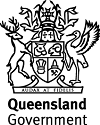Published Tuesday, 30 September, 2008 at 10:49 AM

Minister for Sustainability, Climate Change and Innovation
The Honourable Andrew McNamara
Re-opening of David Fleay’s heritage-listed Platypusary
Fifty years after its creation, the heritage-listed platypusary (home for platypus) at David Fleay Wildlife Park on the Gold Coast was today re-opened by Member for Burleigh Christine Smith.
“While the platypuses at David Fleay’s will continue to live in the park’s specially designed Nocturnal House, the restored platypusary serves as a reminder of David Fleay’s important early nature conservation work in Queensland,” Ms Smith said.
“Dr Fleay’s work lead to a string of achievements in captive breeding programs around the world.”
Minister for Sustainability, Climate Change and Innovation Andrew McNamara said the platypusary was constructed in 1958.
“Its design elements reflect those used at the Healesville Sanctuary in Victoria where David Fleay bred the first platypus in captivity in 1943,” Mr McNamara said.
“Today there are two platypus, Mary and Pebbles, on display at David Fleay’s.
“Mary, who turned 21 this year, was originally housed in the restored platypusary,” he said.
David Fleay began his research on the breeding habits of the platypus in 1937 in Victoria.
The park’s 1997 Conservation Plan highlighted Dr Fleay’s original platypusary as being of extreme cultural significance because of ‘its association with David Fleay’s unique scientific achievements’.
In 1954 Dr Fleay demonstrated ‘Teddy’, one of the platypus, to Her Majesty Queen Elizabeth II and Prince Phillip at Government House in Brisbane. The royal memento presented to Dr Fleay to mark this occasion is located on the wall behind the platypusary.
Many people are indebted to Dr Fleay for the study of taipans that began in 1950 and led to the production of antivenin from 1955. He went on to supply snake venom of the taipan, death adder, brown snakes, the tiger snake and more for many years.
Volunteer guided tours to the heritage Platypusary will further enhance the visitors experience at David Fleay Wildlife Park by providing an insight into the passion and style of the man known as ‘the father of conservation’ – long before there was recognition of the need to conserve our native wildlife.
The Environmental Protection Agency manages the David Fleay Wildlife Park as an environmental education facility, to raise community awareness and promote the conservation of endangered wildlife.
Media contact: Emma Parnell on 3336 8002
“While the platypuses at David Fleay’s will continue to live in the park’s specially designed Nocturnal House, the restored platypusary serves as a reminder of David Fleay’s important early nature conservation work in Queensland,” Ms Smith said.
“Dr Fleay’s work lead to a string of achievements in captive breeding programs around the world.”
Minister for Sustainability, Climate Change and Innovation Andrew McNamara said the platypusary was constructed in 1958.
“Its design elements reflect those used at the Healesville Sanctuary in Victoria where David Fleay bred the first platypus in captivity in 1943,” Mr McNamara said.
“Today there are two platypus, Mary and Pebbles, on display at David Fleay’s.
“Mary, who turned 21 this year, was originally housed in the restored platypusary,” he said.
David Fleay began his research on the breeding habits of the platypus in 1937 in Victoria.
The park’s 1997 Conservation Plan highlighted Dr Fleay’s original platypusary as being of extreme cultural significance because of ‘its association with David Fleay’s unique scientific achievements’.
In 1954 Dr Fleay demonstrated ‘Teddy’, one of the platypus, to Her Majesty Queen Elizabeth II and Prince Phillip at Government House in Brisbane. The royal memento presented to Dr Fleay to mark this occasion is located on the wall behind the platypusary.
Many people are indebted to Dr Fleay for the study of taipans that began in 1950 and led to the production of antivenin from 1955. He went on to supply snake venom of the taipan, death adder, brown snakes, the tiger snake and more for many years.
Volunteer guided tours to the heritage Platypusary will further enhance the visitors experience at David Fleay Wildlife Park by providing an insight into the passion and style of the man known as ‘the father of conservation’ – long before there was recognition of the need to conserve our native wildlife.
The Environmental Protection Agency manages the David Fleay Wildlife Park as an environmental education facility, to raise community awareness and promote the conservation of endangered wildlife.
Media contact: Emma Parnell on 3336 8002

